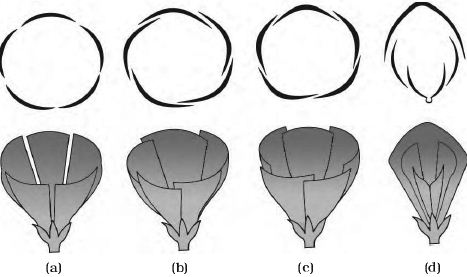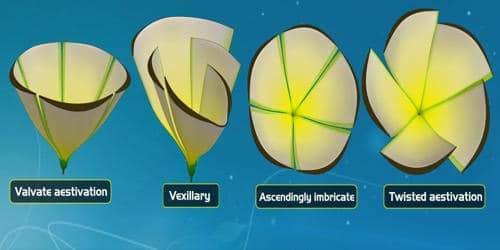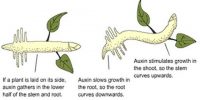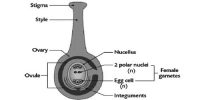The mode of arrangement of sepals or petals in the floral bud with respect to the other members of the same whorl is known as aestivation. Aestivation is the arrangement of either the sepals or the petals in a flower bud with relation to one another as vernation proper is the arrangement of young leaves in the vegetative bud.
Aestivation is the mode of arrangement of sepals or petals in a floral bud with respect to the other members of the same whorl. The main types of aestivation are valvate, twisted, imbricate, and vexillary (Figure).

Fig: types of aestivation in corolla: valvate, twisted, imbricate and vexillary
Aestivation is the arrangement especially in flowering plants where the accessory flowering organs are in relation to one or the other floral bud, most often lyrics the sepals and petals are organized. It is arrangement of accessory floral organs in relation to one another in the floral bud.
- Valvate: Margins of the adjacent petals touch each other but do not overlap. Margins of the adjacent or separate Etal really close and touch each other but without a chance of overlapping, for example, the corolla of Brassica.
- Twisted: Margin of one petal overlaps with the margin of another petal e.g., petals of Hibiscus. One margin of a petal will overlap regularly with the margin of an adjacent petal; the other margin being overlapped by a margin of another adjacent petal.
- Imbricate: There is irregular overlapping of petals e.g., Legumes. Posterior (lower part) petal being overlapped by the two lateral ones while they are being overlapped by the two anterior (upper part) ones, for example, Cassia (vernacular Amaltus) Gold Mohr.
- Vexillary: It occurs in flower whorl of five petals. In such an arrangement, one posterior petal is largest which covers two lateral petals. These two lateral petals cover two interior or smallest petals e.g., Pea. It is also known as or called a papilionaceous corolla.
When sepals or petals in a whorl just touch one another at the margin, without overlapping, as in Calotropts, it is said to be valvate. If one margin of the appendage overlaps that of the next one and so on as in china rose, lady’s finger and cotton, it is called twisted. If the margins of sepals or petals overlap one another but not in any particular direction as in Cassia and Gulmohar, the aestivation is called imbricate. In pea and bean flowers, there are five petals, the largest (standard) overlaps the two lateral petals (wings) which in turn overlap the two smallest anterior petals (keel); this type of aestivation is known as vexillary or papilionaceous.














